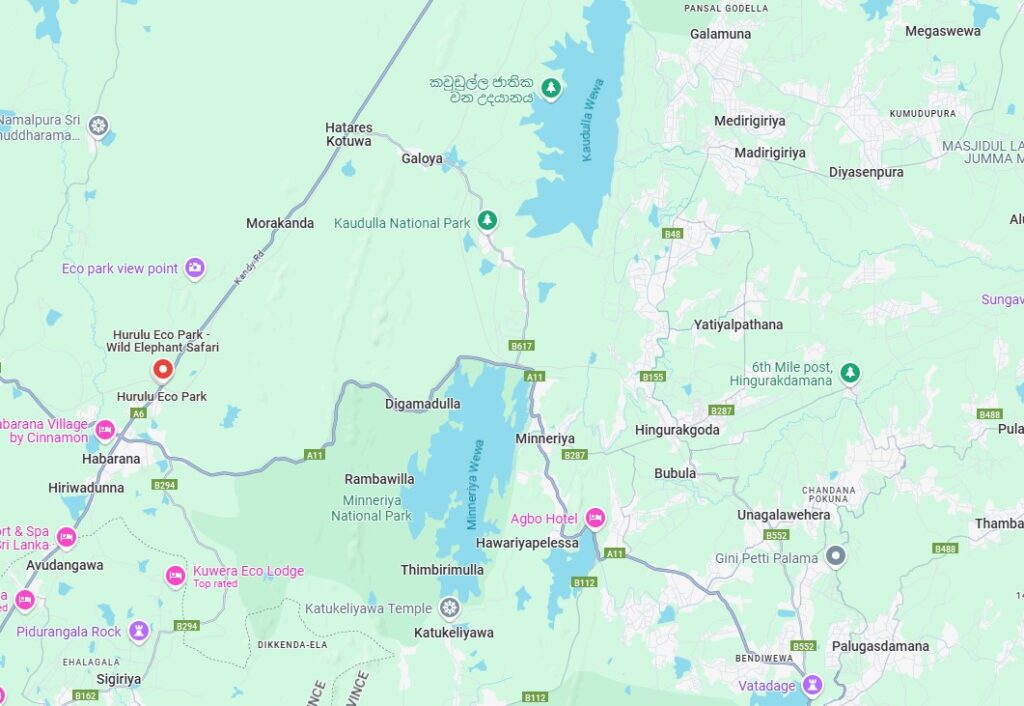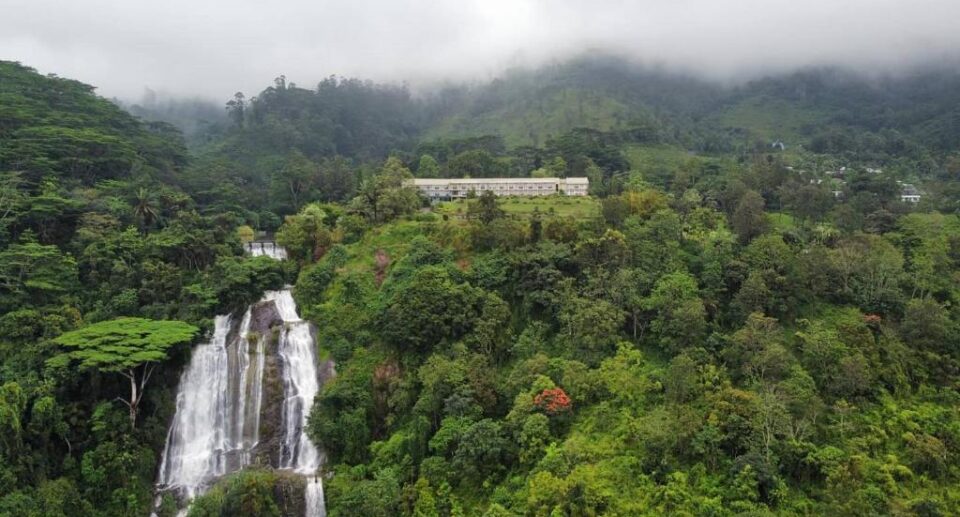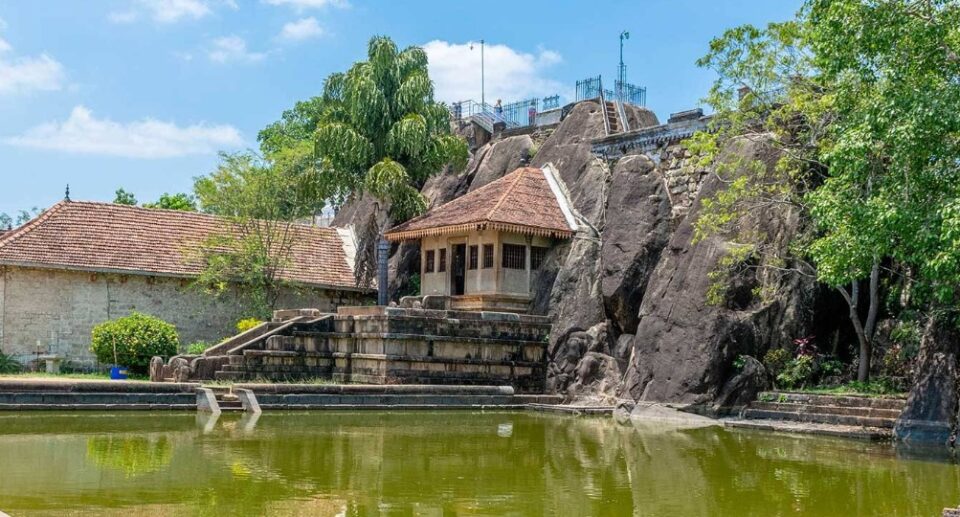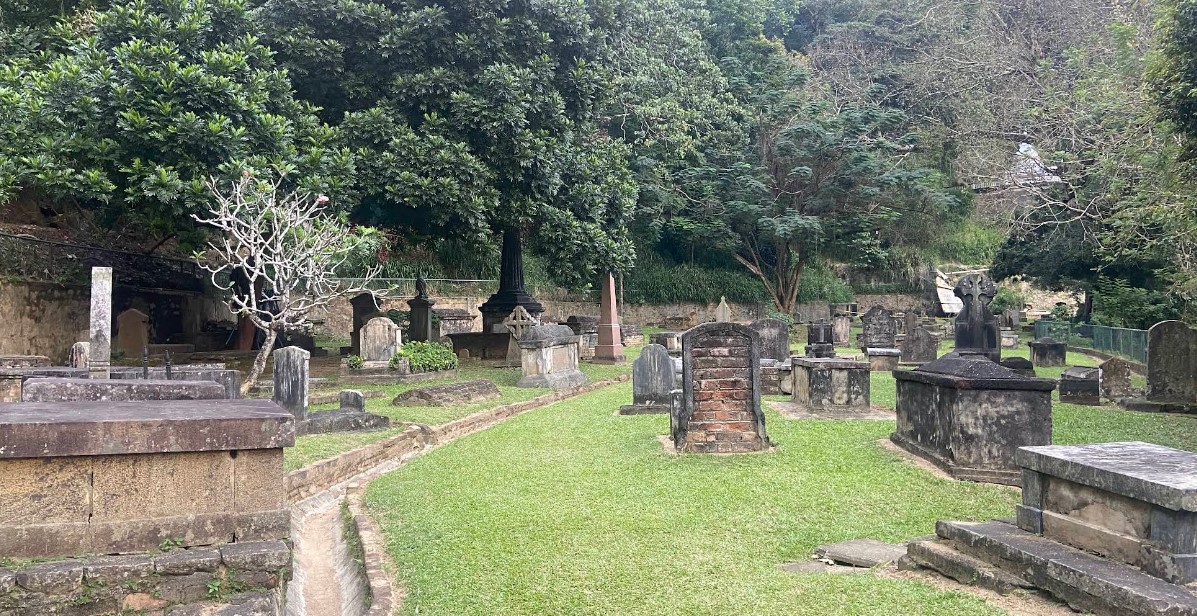Hurulu Eco Park Safari: A Gateway to Sri Lanka’s Wild Heart
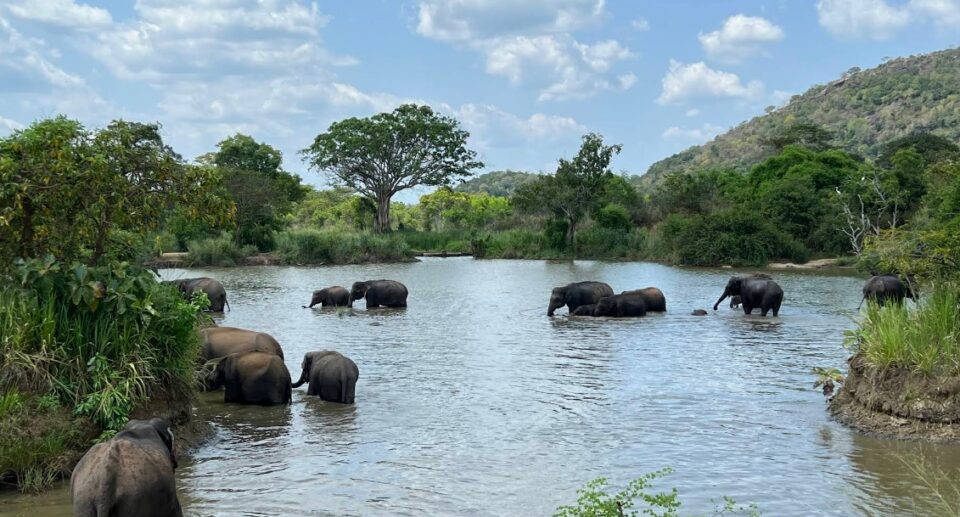
A Haven of Biodiversity in Sri Lanka
Located in Sri Lanka’s North Central Province, Hurulu Eco Park is the island’s most valuable natural sanctuary. Covering approximately 2,500 hectares, it is a component of the greater Hurulu Forest Reserve, a UNESCO Biosphere Reserve since 1977. The nature reserve is a protected area that is an ecological treasure known for its high biodiversity, unique dry-zone forest ecosystem, and critical role as a wildlife sanctuary—specifically as a migration route for Sri Lanka’s iconic elephants.
Geographic and Ecological Importance
Hurulu Eco Park is located near Habarana, a town renowned as a wildlife safari center, between Minneriya and Kaudulla National Parks. The region is commonly referred to as the “Elephant Corridor” due to the migration of elephants during the dry season between the three parks in search of food and water. Hurulu Eco Park’s position is ecologically significant because it offers a secure passage for such movements and ensures the sustained protection of Sri Lanka’s elephant population.
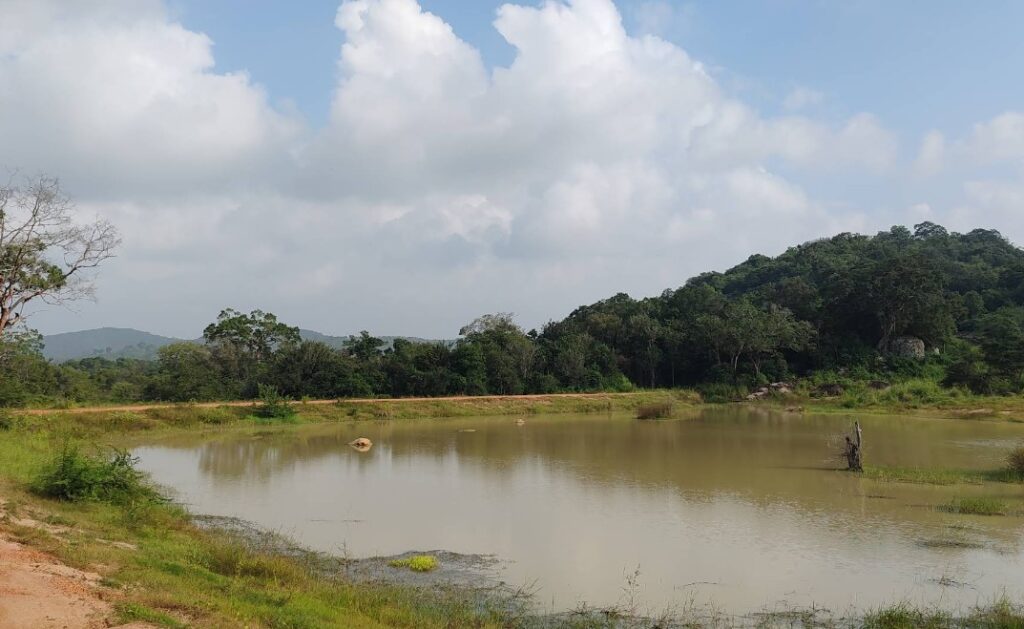
The park occurs in Sri Lanka’s dry-zone lowland and has a tropical monsoon climate. It experiences about 1,600 mm of average annual rainfall and an average annual temperature of around 27.3°C. The dry season, typically April to September, greatly affects vegetation and wildlife behavior, with many animals relying on permanent water sources like the Hurulu Wewa reservoir within the park to survive the drought.
Flora and Vegetation
Hurulu Eco Park is characterized by its variety of flora, predominantly as dry evergreen forests. Palu (Manilkara hexandra), Burutha (Chloroxylon swietenia), and Kaluwara (Diospyros ebenum) are the dominating tree species, which contribute to the park’s unique ecological identity. These trees not only possess an ecological value in terms of soil stabilization, oxygen generation, and shading but are also culturally and economically significant in Sri Lanka.
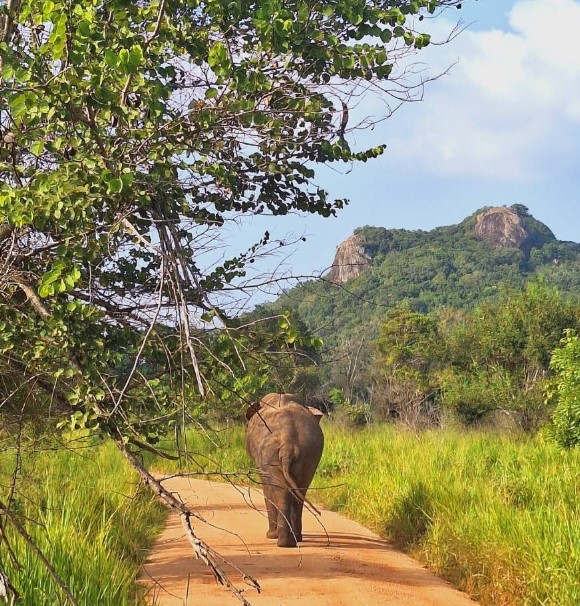
The undergrowth consists of a variety of shrubs, grasses, and herbs that are consumed by the herbivorous animals, mostly elephants. The existence of the Hurulu Wewa reservoir also adds to the diversity of the park through the maintenance of semi-aquatic and aquatic plants, which further support a range of bird and amphibian life.
Fauna: A Wildlife Hotspot
One of the most characteristic aspects of Hurulu Eco Park is its density of wildlife, namely Asian elephants (Elephas maximus). Herds of elephants in the dry season migrate from neighboring parks, so Hurulu is one of the best places in the country to spot these fantastic creatures in their natural habitat. Tourists may spot elephants bathing, feeding, or playing with family groups, and be afforded an unusual and up-close look at their social habits.
Other than elephants, Hurulu Eco Park has a rich variety of other mammals. These include the Sri Lankan leopard (Panthera pardus kotiya), though rarely seen due to its timid nature. Sloth bears, spotted deer, sambars, jungle cats, and wild boars inhabit the park as well. Primate species such as the grey langur and purple-faced leaf monkey add to the mammalian diversity of the park.
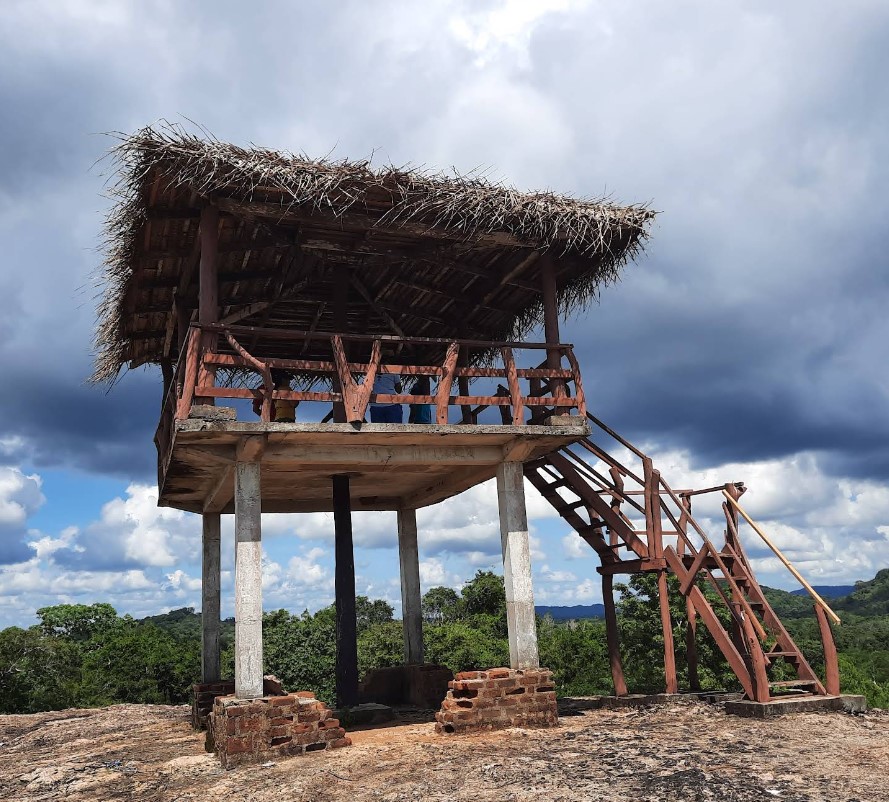
The park is paradise for birdwatchers with over 150 species of birds recorded. Some of the salient bird species include Indian peafowl, Sri Lanka junglefowl (national bird of the country), Crested serpent eagle, and the globally threatened Lesser adjutant stork. Grassland, forest cover, and water resources collectively present ideal habitats for resident as well as migratory birds.
Reptiles and amphibians are also present in huge quantities, such as the sighting of Indian star tortoises, monitors, pythons, and other frogs and toads that thrive during the wet season.
Conservation Challenges and Initiatives
Despite its protected designation, Hurulu Eco Park is plagued by various conservation problems, the most important of which is the human-elephant conflict. With growing human settlements and agricultural progress on the fringes of the park, the elephants’ natural migratory patterns get disrupted and incline to create conflict. Elephants can destroy farms and houses, but counterattacks by humans can result in their deaths.
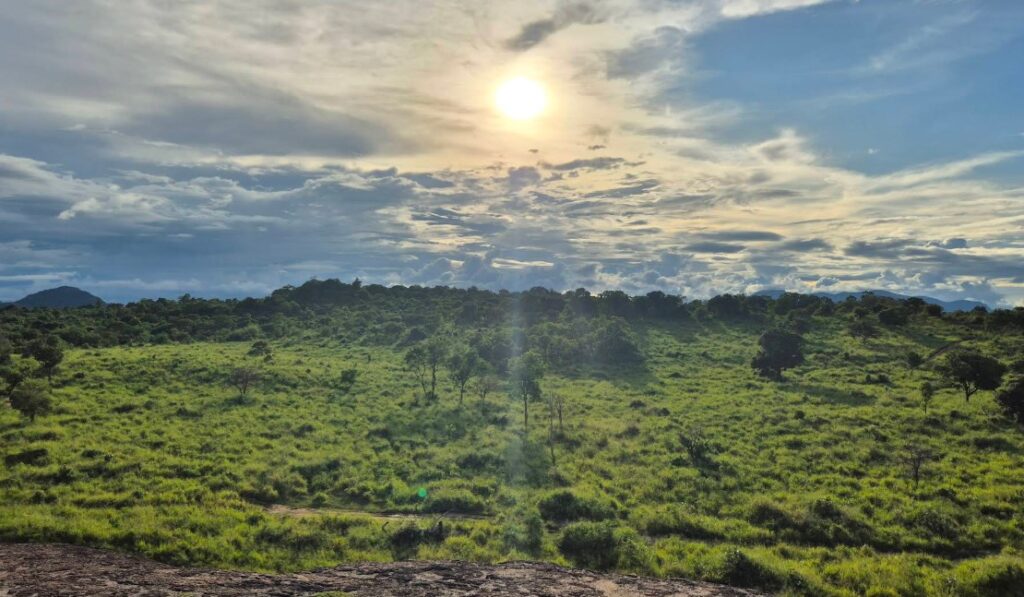
Some of the actions that have been taken to solve this problem include electric fencing, local community education, and elephant translocation. However, research has shown that translocated elephants will return to their home ranges, despite having strong homing abilities. This serves further to highlight the importance of maintaining unbroken migratory routes, such as those through Hurulu Eco Park.
Sri Lanka’s Department of Wildlife Conservation and non-governmental organizations are also working hard at preserving the park’s ecosystem. Habitat restoration, community-based conservation efforts, and ecologically sound tourism that benefits local economies while having least possible impacts on the environment are undertaken.
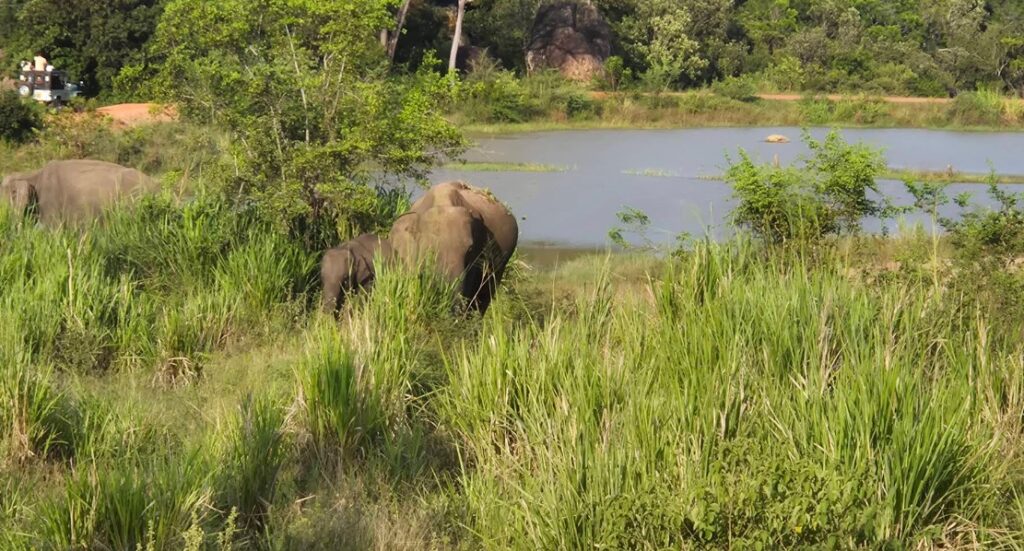
Eco-Tourism and Community Engagement
Hurulu Eco Park is popular with eco-tourists, both domestic and international. The park is most accessed by jeep safaris, typically conducted early morning or late afternoon when animal activity is at its peak. The safaris offer an environmentally friendly way of observing the park’s fauna and landscape, while trained tour guides present informative comments about the park’s ecology.
It maintains local livelihoods by providing income to guides, drivers, artisans, and vendors. Besides, several nearby villages also provide cultural activities like traditional cuisine classes, crafts, and nature walks, thus creating a closer relationship between the visitors and the heritage of the region.
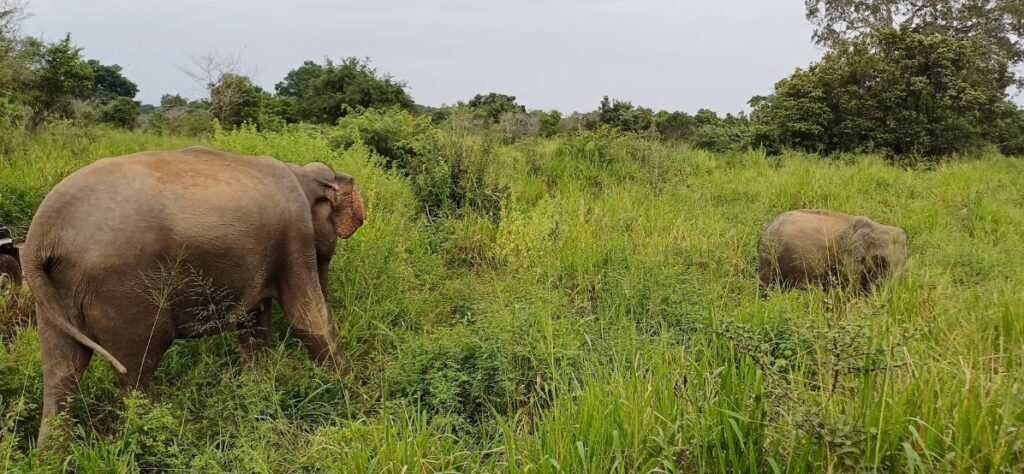
To ensure that there is a balance between the environment and tourism, regulations have been put in place by the authorities, including the restriction of the vehicles in the park within a specific period and the promotion of environmentally friendly methods among the safari operators.
Significance in the Wider Conservation Environment
Hurulu Eco Park also has a strategic location in the wider system of protected areas in Sri Lanka. With Minneriya and Kaudulla, it forms an integral part of the Central and North-Central dry zone wildlife corridor. This corridor allows for genetic diversity in animal populations, promotes long-term survival of species, and assists with buffering climate change impacts through the availability of a variety of habitats and resources in different landscapes.
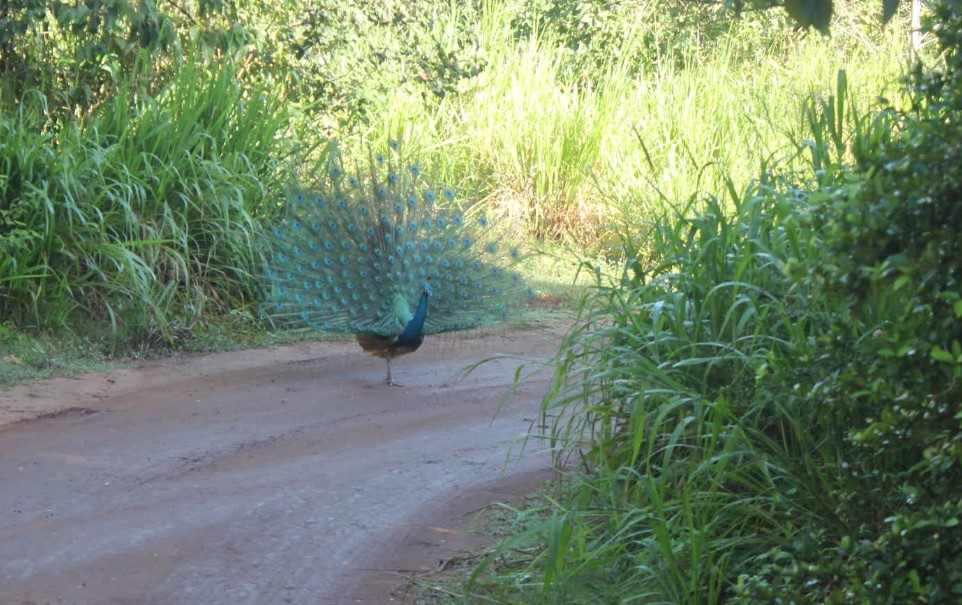
As climate patterns become increasingly unpredictable, protected areas like Hurulu Eco Park become critical for maintaining ecological balance and serving as natural buffers against environmental degradation.
Hurulu Eco Park is an exemplary showcase of green development, cultural and biological heritage, and biodiversity. It shows how natural ecosystems, if properly conserved and managed, can coexist with human settlements and serve as a foundation for conservation and eco-tourism. In spite of the ongoing threats of habitat encroachment and human-wildlife conflict, the combined efforts of government agencies, conservationists, and local communities give impetus to the continued conservation of the park.
By a visit and patronage of Hurulu Eco Park, tourists not only have a chance to see Sri Lanka’s wild heart from an unusual perspective but also contribute to the ongoing effort of saving one of the island’s greatest ecological treasures. Thus, Hurulu Eco Park is not just a place of tourism, but a living classroom and beacon of the strength of nature and its capacity to heal.
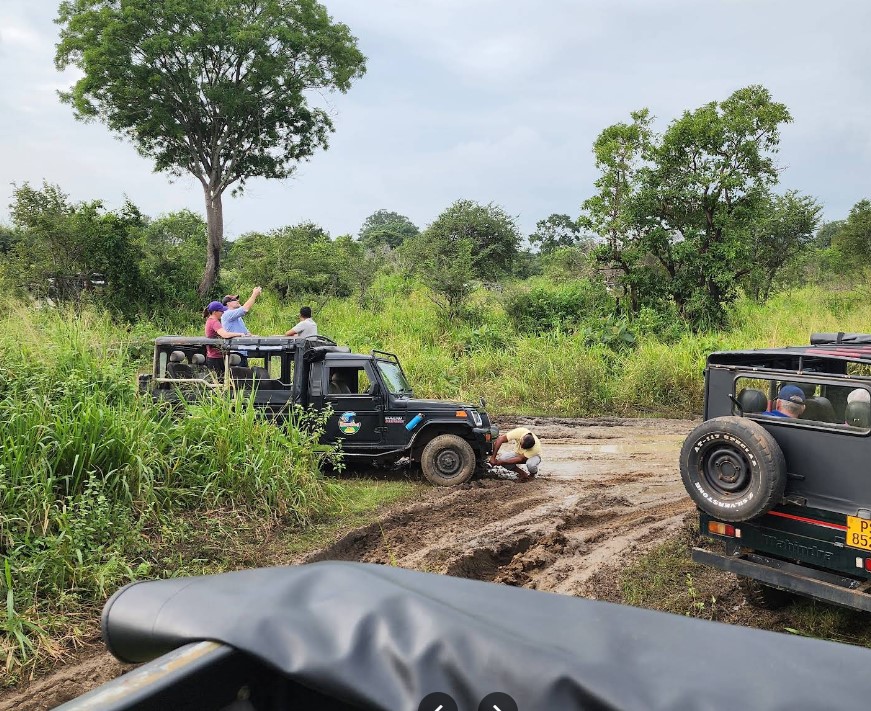
Reaching Hurulu Eco Park from Colombo is straightforward, whether you’re driving yourself or opting for public transport. The park is located in Habarana, approximately 170 kilometers northeast of Colombo. Here’s how you can get there:
By Car
From Colombo to Hurulu Eco Park:
- Route: Take the A1 highway (Colombo–Kandy Road) from Colombo.
- Continue: Proceed towards Kurunegala and then onto the A6 road heading towards Habarana.
- Arrival: Upon reaching Habarana, continue on the A11 road towards Trincomalee.
- Destination: The park entrance is located approximately 5 km from Habarana town center along the A11 road, near the Habarana Railway Station.
By Public Transport
From Colombo to Habarana:
- Bus: Board a bus from Colombo’s Pettah Bus Stand to Habarana.
- Duration: The journey takes about 4 to 5 hours.
- Fare: Approximately LKR 300–500
From Habarana to Hurulu Eco Park:
- Tuk-Tuk: Hire a tuk-tuk from Habarana town to the park entrance.
- Distance: Approximately 5 km.
- Fare: Around LKR 500–700.
By Taxi or Ride-Hailing
From Colombo to Hurulu Eco Park:
- Taxi: Hire a taxi directly to the park.
- Fare: Approximately LKR 8,000–10,000.
Alternatively:
- Ride-Hailing Apps: Use local ride-hailing services like PickMe or Uber to book a ride.
- Fare: Rates may vary; it’s advisable to check the app for estimates
Tips for Visiting
- Best Time to Visit: Early morning or late afternoon for optimal wildlife sightings.
- What to Bring: Binoculars, comfortable clothing, sturdy shoes, sunscreen, and insect repellent.
- Safari Options: Consider booking a guided safari for a more enriching experience.
Map of Hurulu Eco Park
